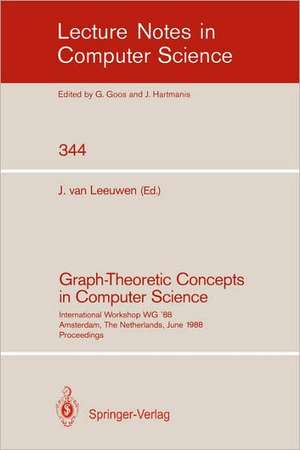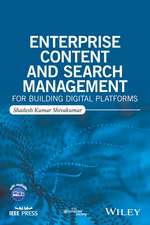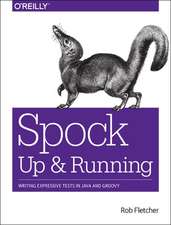Graph-Theoretic Concepts in Computer Science: International Workshop WG `88 Amsterdam, The Netherlands, June 15-17, 1988. Proceedings: Lecture Notes in Computer Science, cartea 344
Editat de Jan van Leeuwenen Limba Engleză Paperback – 25 ian 1989
| Toate formatele și edițiile | Preț | Express |
|---|---|---|
| Paperback (2) | 334.29 lei 6-8 săpt. | |
| Springer Berlin, Heidelberg – 20 mai 1994 | 334.29 lei 6-8 săpt. | |
| Springer Berlin, Heidelberg – 25 ian 1989 | 391.48 lei 6-8 săpt. |
Din seria Lecture Notes in Computer Science
- 20%
 Preț: 1043.63 lei
Preț: 1043.63 lei - 20%
 Preț: 334.61 lei
Preț: 334.61 lei - 20%
 Preț: 336.22 lei
Preț: 336.22 lei - 20%
 Preț: 445.69 lei
Preț: 445.69 lei - 20%
 Preț: 238.01 lei
Preț: 238.01 lei - 20%
 Preț: 334.61 lei
Preț: 334.61 lei - 20%
 Preț: 438.69 lei
Preț: 438.69 lei -
 Preț: 442.03 lei
Preț: 442.03 lei - 20%
 Preț: 337.87 lei
Preț: 337.87 lei - 20%
 Preț: 148.66 lei
Preț: 148.66 lei - 20%
 Preț: 310.26 lei
Preț: 310.26 lei - 20%
 Preț: 256.27 lei
Preț: 256.27 lei - 20%
 Preț: 634.41 lei
Preț: 634.41 lei - 17%
 Preț: 427.22 lei
Preț: 427.22 lei - 20%
 Preț: 643.99 lei
Preț: 643.99 lei - 20%
 Preț: 307.71 lei
Preț: 307.71 lei - 20%
 Preț: 1057.10 lei
Preț: 1057.10 lei - 20%
 Preț: 581.55 lei
Preț: 581.55 lei -
 Preț: 374.84 lei
Preț: 374.84 lei - 20%
 Preț: 331.36 lei
Preț: 331.36 lei - 15%
 Preț: 431.22 lei
Preț: 431.22 lei - 20%
 Preț: 607.39 lei
Preț: 607.39 lei - 20%
 Preț: 538.29 lei
Preț: 538.29 lei -
 Preț: 389.48 lei
Preț: 389.48 lei - 20%
 Preț: 326.98 lei
Preț: 326.98 lei - 20%
 Preț: 1390.89 lei
Preț: 1390.89 lei - 20%
 Preț: 1007.16 lei
Preț: 1007.16 lei - 20%
 Preț: 569.54 lei
Preț: 569.54 lei - 20%
 Preț: 575.48 lei
Preț: 575.48 lei - 20%
 Preț: 573.59 lei
Preț: 573.59 lei - 20%
 Preț: 750.35 lei
Preț: 750.35 lei - 15%
 Preț: 570.71 lei
Preț: 570.71 lei - 17%
 Preț: 360.19 lei
Preț: 360.19 lei - 20%
 Preț: 504.57 lei
Preț: 504.57 lei - 20%
 Preț: 172.69 lei
Preț: 172.69 lei - 20%
 Preț: 369.12 lei
Preț: 369.12 lei - 20%
 Preț: 347.59 lei
Preț: 347.59 lei - 20%
 Preț: 576.02 lei
Preț: 576.02 lei -
 Preț: 404.00 lei
Preț: 404.00 lei - 20%
 Preț: 586.43 lei
Preț: 586.43 lei - 20%
 Preț: 750.35 lei
Preț: 750.35 lei - 20%
 Preț: 812.01 lei
Preț: 812.01 lei - 20%
 Preț: 649.49 lei
Preț: 649.49 lei - 20%
 Preț: 344.34 lei
Preț: 344.34 lei - 20%
 Preț: 309.90 lei
Preț: 309.90 lei - 20%
 Preț: 122.89 lei
Preț: 122.89 lei
Preț: 391.48 lei
Nou
Puncte Express: 587
Preț estimativ în valută:
74.96€ • 78.05$ • 62.19£
74.96€ • 78.05$ • 62.19£
Carte tipărită la comandă
Livrare economică 15 februarie-01 martie
Preluare comenzi: 021 569.72.76
Specificații
ISBN-13: 9783540507284
ISBN-10: 3540507280
Pagini: 472
Ilustrații: X, 462 p.
Dimensiuni: 155 x 235 x 25 mm
Greutate: 0.65 kg
Ediția:1989
Editura: Springer Berlin, Heidelberg
Colecția Springer
Seria Lecture Notes in Computer Science
Locul publicării:Berlin, Heidelberg, Germany
ISBN-10: 3540507280
Pagini: 472
Ilustrații: X, 462 p.
Dimensiuni: 155 x 235 x 25 mm
Greutate: 0.65 kg
Ediția:1989
Editura: Springer Berlin, Heidelberg
Colecția Springer
Seria Lecture Notes in Computer Science
Locul publicării:Berlin, Heidelberg, Germany
Public țintă
ResearchCuprins
NC-algorithms for graphs with small treewidth.- Graph-theoretic properties compatible with graph derivations.- The monadic second-order logic of graphs : Definable sets of finite graphs.- On systems of equations defining infinite graphs.- Fault tolerant networks of specified diameter.- DFS tree construction: Algorithms and characterizations.- Serializable graphs.- Transitive closure algorithms for very large databases.- A graph-based decomposition approach for recursive query processing.- Construction of deterministic transition graphs from dynamic integrity constraints.- (Time × space)-efficient implementations of hlerarchical conceptual models.- Dominance in the presence of obstacles.- Separating a polyhedron by one translation from a set of obstacles.- Linear time algorithms for testing approximate congruence in the plane.- Moving regular k-gons in contact.- Epsilon-nets for halfplanes.- Greedy triangulation can be efficiently implemented in the average case.- A simple systolic method to find all bridges of an undirected graph.- Colouring perfect planar graphs in parallel.- An efficient parallel algorithm for the all pairs shortest path problem.- A parallel algorithm for channel routing.- Application of graph theory to topology generation for logic gates.- On the estimate of the size of a directed graph.- The average size of ordered binary subgraphs.- O(n2) algorithms for graph planarization.- Bandwidth and profile minimization.- On the spanning trees of weighted graphs.- On paths in search or decision trees which require almost worst-case time.- A time-optimal parallel algorithm for the computing of Voronoi-diagrams.- Voronoi diagrams in the moscow metric.- A sweep algorithm and its implementation: The all-nearest-neighbors problem revisited.














